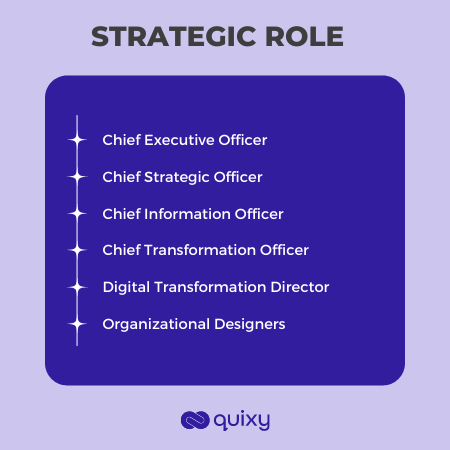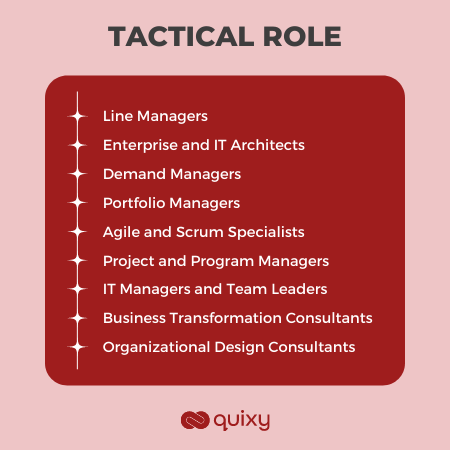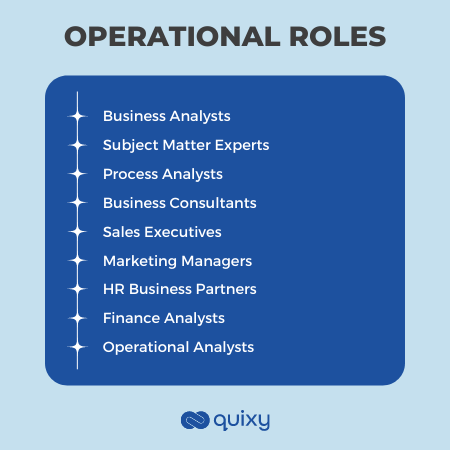
Putting the power of IT into the hands of business users or non-IT personnel is the essence of citizen development (leveraging no-code platforms to make digital transformation happen). Imagine this – with just a few weeks of no-code training, a novice from any area of a business can build priority-specific applications, or in other words, a non-IT professional can become a DIY developer, popularly referred to as a citizen developer. By paving the path for the future with Citizen Development for business users, businesses can unlock the full potential of their workforce and achieve new levels of creativity and collaboration.
Embracing Citizen Development can result in improved processes, enhanced customer satisfaction, and increased revenue growth. As a result, businesses that invest in Citizen Development can stay ahead of the competition and continue to succeed in today’s fast-paced business environment.
There is a lot of unmet demand in today’s organizations that central IT solution teams cannot meet. When citizen developers are provided with no-code tools, they can create solutions ten times faster than they could if they relied solely on programming.
They solve problems as they arise, developing applications that are unlikely to make it onto IT’s radar. Developers and architects can concentrate on the more complex solutions that truly add value to the company. It translates into increased overall productivity (98% less time spent creating operational dashboards) and improved business outcomes.
The Democratization of Software is here: Citizen Development for Business Users
The democratization of software is changing the way businesses operate and empowering their users to take control of their own digital transformation. Citizen development, the practice of allowing non-technical business users to create and modify their own software applications, is at the forefront of this shift. By giving employees the tools and resources, they need to build custom software solutions to meet their unique needs, and businesses are able to foster a culture of innovation, reduce dependence on IT departments, and ultimately drive better outcomes for their organization. With the democratization of software, businesses of all sizes are now able to reap the benefits of citizen development and drive digital transformation from within.
What is Citizen Development?
Citizen development is a revolutionary approach to building software applications, websites, or tools. Regardless of their technical background, it allows anyone to create custom applications using low-code or no-code platforms. That means you don’t need to be a programming wizard to build your apps!
But that’s not all. Citizen development empowers your employees to take ownership of their work by giving them the tools they need to be more productive. It also frees up your IT team to tackle more complex projects, reducing the backlog of IT requests.
Sounds too good to be true? Well, there are a few things to keep in mind. It’s essential to train and support citizen developers to ensure they create secure and scalable applications. Plus, IT teams should be involved to provide oversight and ensure the apps align with your company’s tech strategy.
But if you’re ready to take your company’s productivity to the next level, citizen development is the way to go. So why wait? Empower your team and unleash your creativity today!
Your business partners can create the tools they need on their own
Citizen development for business users empowers partners to create the tools they need on their own without relying on IT departments or external software vendors. This is made possible through low-code and no-code platforms that offer a drag-and-drop interface, pre-built components, and other features that make it easy for non-technical users to build custom applications. Business partners can use these platforms to quickly create custom solutions that address their specific business needs and requirements without having to write a single line of code.
This can help them work more efficiently, improve collaboration, and drive innovation in their organization. Furthermore, by giving business partners the ability to create the tools they need on their own, citizen development can help organizations reduce their dependence on IT departments, freeing them up to focus on more strategic initiatives and projects. Take the first step towards citizen-led innovation. Dive into the assessment guide today!
What happens when business users “Build” their own solutions?
With the rise of citizen developers, business users are changing the rules of software development. Instead of relying on IT departments or external software vendors to create the tools they need, business users are now able to take matters into their own hands and “build” their own solutions. Using low-code and no-code platforms, business users can quickly and easily create custom applications that meet their needs and requirements. Citizen development for business users not only gives them more control over their digital transformation but also helps them work more efficiently and effectively. You can also check out Citizen Developer’s Toolbox: Insights and Strategies from Our eBook-Innovate and Empower: A Journey through Citizen Development!
When business users “build” their own solutions, they bring a unique perspective and understanding of the business to the software development process. They know what problems need to be solved and what solutions will work best for their specific needs, and they can build custom applications to meet those needs. This can lead to faster development times, better alignment between software and business needs, and, ultimately, more successful outcomes.
Citizen development for business users is disrupting traditional software development models by empowering partners, users & employees to take control of their own digital transformation. This is leading to a more agile, user-centric, and efficient software development process that is better aligned with the needs of modern businesses. By changing the rules of software development, citizen development is driving a new era of innovation and growth in the business world.
Process of Putting IT Power in the Hands of Business Users
It certainly involves a mindset shift in your IT team’s application development. As most organizations do today, you need to change how you perceive compliance and governance, addressing both at the platform level rather than at the application level.
Guardrails are important. All applications require design, data integrity, analytics, security, and regulatory compliance safeguards, and the ecosystem surrounding low-code and no-code platforms is crowded. As a result, it’s critical to define a set of use cases for what should be on each of the organization’s platforms.
It is also essential to create fusion teams and demarcate roles and responsibilities of not just citizen developers but also technical people.
Also Read: Top 5 Citizen Development Platforms to Create Business Apps
Roles & Responsibilities of Business users leveraging Citizen Development
Business users are typically employees who work in a specific department or business unit within an organization and who use technology to solve specific problems related to their work. For example, a salesperson might use a customer relationship management (CRM) system to manage their sales leads and customer interactions, or an HR administrator might use an HR management system to handle employee benefits and payroll.
By leveraging citizen development for business users, teams are empowered to create custom software solutions that meet their specific needs without relying solely on IT departments or external vendors. This can help to improve the efficiency and effectiveness of their work, while also driving innovation and digital transformation within the organization. Let’s have a look at a clearer view.
At the heart of this movement are three key roles: Practitioners, Architects, and Strategists. Together, they form a dynamic and collaborative force that empowers citizen developers and facilitates the successful implementation of citizen-led initiatives.
1. Practitioners: Enabling Creativity and Execution
Citizen Development Practitioners are the individuals within the organization who actively engage in creating applications and solutions using Low-Code and No-Code platforms. These individuals can come from various departments, including marketing, sales, operations, HR, and finance, and possess domain knowledge in their respective fields. They are the frontline contributors who identify specific business challenges and opportunities for improvement.
Practitioners may include business analysts, process owners, and subject matter experts who leverage their expertise and creativity to build applications that address these challenges and deliver tangible outcomes. Their hands-on approach and problem-solving skills enhance the organization’s agility and responsiveness to evolving market demands. Also, Like a radar for obstacles, the citizen development value tree can help you pinpoint potential risks, letting you confidently navigate your project’s course.
Operational Roles
To some extent, operational roles and responsibilities are largely held by citizen developers and also by no-code masters. Depending on your organization’s functioning (centralized or decentralized), you may put citizen developers in one or more departments or business units.
2. Architects: Designing Scalable and Robust Solutions
Citizen Development Architects are the architects of change within the organization. They are typically IT professionals with a deep understanding of the organization’s IT infrastructure, security requirements, and compliance standards. These professionals can be software architects, solution architects, or IT managers responsible for designing the overall IT landscape. Citizen Development Architects ensure that citizen-developed applications align with the organization’s overall IT strategy and adhere to best practices in security, compliance, and governance. Their role is to provide guidance and mentorship to citizen developers, enabling the development of sustainable and impactful applications that can integrate seamlessly into the larger IT ecosystem.
Tactical Roles
Indeed, no-code platforms don’t require extensive coding skills. Still, to support citizen developers and ensure that no-code development is taking place in the right direction, knowledge regarding the business processes and their complexities is needed, especially for programmers who want to monitor and maintain applications/tools built by citizen developers. Your technical staff should understand the nitty-gritty no-code applications to successfully integrate with third-party solutions.
3. Strategists: Aligning Citizen Development with Organizational Goals
Strategists play a critical role in driving the success of CD initiatives. They can be business leaders, IT managers, or individuals with a cross-functional understanding of the organization’s objectives. Strategists collaborate closely with business units, IT teams, and citizen developers to align initiatives with the organization’s digital transformation strategy.
They identify opportunities, prioritize projects, and allocate resources effectively to maximize the impact of citizen-led initiatives. With a strategic vision, Strategists foster a culture of collaboration and innovation, enabling Citizen Development to flourish. Their role is instrumental in unlocking the true potential of Citizen Development as a driver of organizational growth.
Strategic Roles
Someone from the top leadership (CEO or CIO) is suitable for this role. If the situation demands it, they can also work as a collaborator or even an icebreaker between business users and the IT department.
Practitioners with domain expertise, Architects with IT knowledge, and Strategists with strategic vision collectively contribute to building a robust and sustainable Citizen Development ecosystem. Together, they propel the organization towards continuous growth and success, leveraging the power of citizen-led innovation.
When defining the scope of work for citizen developers, you will need to decide whether you will adopt the no-code approach to build departmental workflow apps or customer-facing apps. The primary role of citizen developers (business users) is not to build applications, and they are required to juggle between multiple roles; therefore, it’s essential to designate the minimum and the maximum number of citizen development hours.
Also read: Top 8 Tips for Managing No-Code Low-Code Citizen Development
Identify business users who can become citizen developers
Citizen developers are business users who are or were involved in tedious manual processes. So, an ideal candidate for citizen development is someone who has hands-on experience in dealing with paper-based processes and understands the related pain points.
Although no technical background is required to use no-code platforms, users need to have sound business logic to build applications visually. Therefore, this can be the second consideration when choosing your citizen developer.
An ideal candidate should also have a collaborative mindset because citizen development is not a “one-man show” and is carried out through a governance model.
Citizen Developers don’t have to be experts
Citizen developers are individuals who are not professional software developers but have the ability to create applications and automate tasks using low-code or no-code platforms. These platforms provide drag-and-drop interfaces and pre-built templates, making it easier for non-experts to create custom applications without having to write complex code.
Citizen development for business users empowers employees to create solutions for their specific business needs, saving time and resources for their organizations. The goal of citizen development is to democratize app creation and allow individuals to bring their ideas to life without relying on IT teams or expensive software development services.

Usability of Citizen Development for Business Users
The shift towards Citizen Development is driven by the need for organizations to be more agile and responsive to the changing needs of their customers and employees. By giving business users the tools and resources, they need to drive their own digital transformation, organizations can increase their speed-to-market, reduce costs, and improve customer satisfaction. As a result, many businesses are embracing Citizen Development as a key part of their digital strategy and seeing significant benefits.
Citizen Development KPIs and ROI work in tandem to provide a comprehensive understanding of the outcomes of Citizen Development initiatives. They help organizations uncover both the qualitative and quantitative impacts, enabling them to make strategic adjustments and ensure that their efforts are aligned with their goals.
Use-Cases of Citizen Development for Business Users: No-Code Apps you can create using no-code & low-code tools
Here are detailed descriptions of the use cases for no-code app development mentioned in the previous response:
Workflow Automation: Workflow automation involves creating custom applications to automate manual, repetitive tasks such as data entry, approvals, and document management. For example, you can use a no-code platform to build an application that automates the process of reviewing and approving leave requests for employees.
Customer Relationship Management (CRM): No-code platforms can be used to build custom CRM solutions for sales, marketing, and customer service teams. For example, you can create a CRM application to manage leads, track customer interactions, and automate follow-up processes.
Human Resources (HR) Applications: No-code platforms can be used to create HR applications for tracking employee information, benefits enrollment, and performance evaluations. For example, you can build an HR application that allows employees to manage their own personal information, request time off, and receive feedback on their performance.
Supply Chain Management: No-code platforms can be used to develop solutions for managing the flow of goods and materials from procurement to delivery. For example, you can create a supply chain management application that tracks the movement of goods from suppliers to customers, manages inventory levels, and optimizes logistics processes.
Inventory Management: No-code platforms can be used to create custom inventory management systems to track stock levels, manage purchase orders, and optimize inventory levels. For example, you can build an inventory management application that integrates with your existing systems, such as your accounting software, to provide real-time inventory data.
Project Management: No-code platforms can be used to build project management tools for tracking project progress, managing tasks and resources, and monitoring project budgets. For example, you can create a project management application that integrates with your existing tools, such as Google Drive or Microsoft Teams, to provide a centralized hub for all project-related activities.
Marketing Automation: No-code platforms can be used to automate marketing campaigns and track their performance, including email marketing, lead nurturing, and customer segmentation. For example, you can build a marketing automation application that integrates with your existing marketing tools, such as your email marketing platform, to automate lead nurturing and follow-up processes.
Survey and Feedback Collection: No-code platforms can be used to build custom survey and feedback collection tools to gather feedback from customers, employees, and other stakeholders. For example, you can create a survey application that integrates with your existing systems, such as your CRM or HR software, to collect and analyze feedback data.
Also read: 11 Questions you must Answer before implementing Citizen Development
Conclusion
A major paradigm shift is happening with the rise of citizen developers – the democratization of software development. This might look scary due to realities like shadow IT, but having a clear set of IT governance guidelines, IT and business collaboration, roles, and responsibilities can make citizen development a successful venture.
● Top leaders should see citizen developers as creative problem-solvers who use both business and programming logic to build applications in a quick span – a one-of-a-kind workforce.
● They should articulate their understanding and vision to citizen developers across the organization.
● They should bring an executive sponsor who can back the citizen development initiative and demonstrate its benefits to key stakeholders.
● They must set objectives and identify KPIs before they start to have clearly set goals to work towards.
As more and more organizations adopt a hybrid workforce model (with on-premise IT teams), it’s essential to push non-technical employees toward citizen development and not overwhelm remote-based IT teams with simple troubleshooting. Cutting-edge No-code platforms are democratizing and pacing up innovation – letting business analysts, product designers, and marketers become citizen developers.
Frequently Asked Questions
Here are some frequently asked questions related to the topic of citizen development and its potential for businesses:
What is citizen development?
Citizen development refers to the process of creating software applications, tools, or processes by individuals who are not professional developers. These individuals are typically business users or employees with a strong understanding of the company’s operations and needs.
How does citizen development benefit businesses?
Citizen development empowers business users to create customized solutions to their unique challenges, reducing the reliance on IT departments and speeding up the development process. It also promotes a culture of innovation and collaboration within the organization.
What are some common use cases for citizen development?
Some common use cases for citizen development include automating manual processes, creating customized reports or dashboards, and building internal or customer-facing applications.
What skills do business users need to have to participate in citizen development?
Business users do not necessarily need to have coding skills to participate in citizen development, but they should have a strong understanding of the company’s operations and needs, as well as a willingness to learn and experiment with low-code or no-code development platforms.
How can businesses ensure the security and compliance of citizen-developed applications?
To ensure the security and compliance of citizen-developed applications, businesses should establish clear guidelines and governance frameworks for development projects, provide ongoing training and support for business users, and incorporate feedback and input from IT teams to ensure compliance with security and data privacy regulations.
Are there any risks or downsides to citizen development?
One potential risk of citizen development is the potential for security vulnerabilities or data breaches if the applications are not properly vetted and tested before deployment. Additionally, there is the risk of creating technical debt if the applications are not properly maintained or documented over time.
What are some best practices for implementing a successful citizen development program?
Best practices for implementing a successful citizen development program include providing training and resources for non-technical employees, establishing clear guidelines and governance frameworks, fostering a culture of innovation and collaboration, and incorporating feedback and input from IT teams.
Login
Please login to comment
0 Comments
Oldest


















